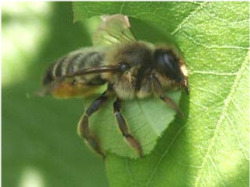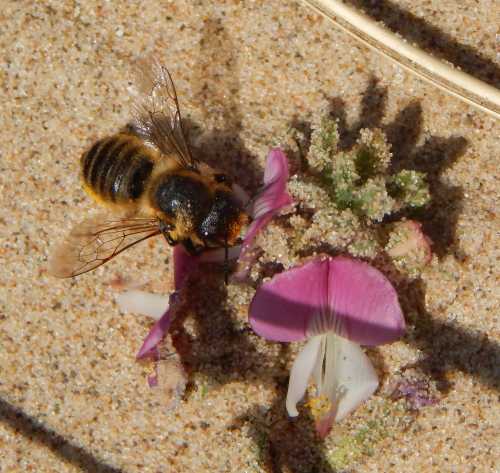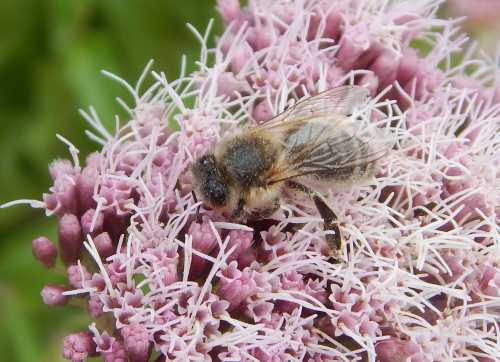Silvery Leafcutter Bee - Megachile leachella
Updated: 1st March 2021
Megachile leachella - the UK’s smallest leafcutter bee, having a distinctive green tinge to the eyes especially visible on males. This species can be found in sandy habitats,
especially coastal dunes and coastal brownfield sites.
Taxonomists regularly review families, genera and species of bee species (as well as other life-forms). As a result, there are sometimes proposals to change the accepted nomenclature associated with some species.
About Megachile leachella - The Silvery Leafcutter
Bee
This species was formerly known as Megachile dorsalis before being changed to Megachile leachella (the UK Bees, Wasps and Ants Recording Society implemented the change December 2012).
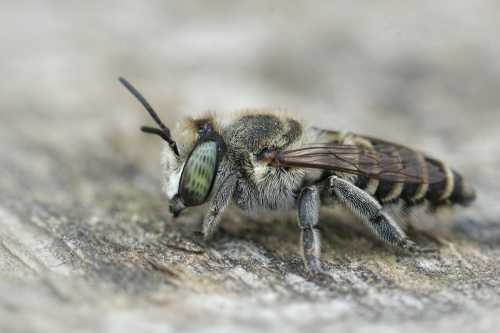 Megachile leachella - the silvery leafcutter bee. This is a female.
Megachile leachella - the silvery leafcutter bee. This is a female.Females have dark eyes which can also appear greenish grey.
The female has a silvery pollen brush on the underside of her abdomen.
As you can see from the photograph below, the eyes of the male are green, but the hair is more gingery brown in hue.
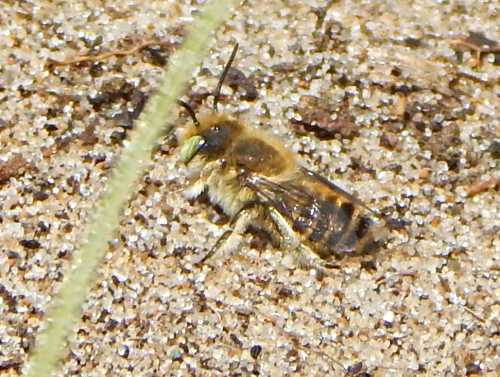 Megachile leachella - the silvery leafcutter bee. This is a male.
Megachile leachella - the silvery leafcutter bee. This is a male.As a species of the Megachilidae bee family, this species is categorized as long-tongued.
It was a warm, sunny day when I photographed this beautiful male silvery leafcutter bee during a visit to a nearby Site of Special Scientific Interest (SSSI).
This coastal area consists of an ecologically diverse sand dune system, with a wonderful floral abundance, and many bees can be seen foraging on the rich variety of wildflowers, shrubs and trees.
The photograph of the male below was taken on a sandy
spot, close to the entrance of a rabbit burrow – evidence for this being the burrow itself, and
rabbit droppings by the entrance. F
Focusing my camera on this very small bee before it took off, wasn't easy with my small camera!
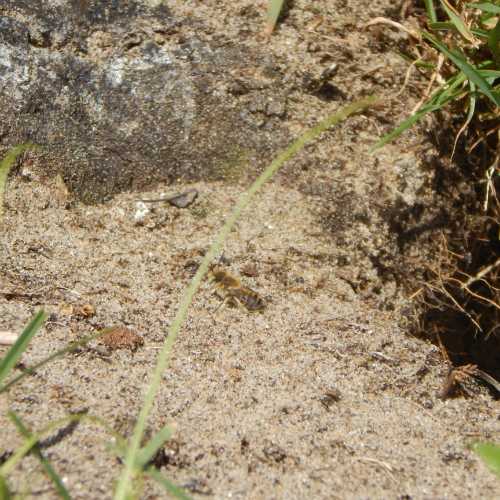 This silvery leafcutter bee male was resting on the sand, next to the entrance of a rabbit burrow.
This silvery leafcutter bee male was resting on the sand, next to the entrance of a rabbit burrow.The smallest of the UK leafcutter bees
The silvery leafcutter bee is the
smallest of the UK leafcutter bees, with a length of about 5 – 7 mm.
These bees are active from end of May to early September (these photographs taken in
June).
Habitat
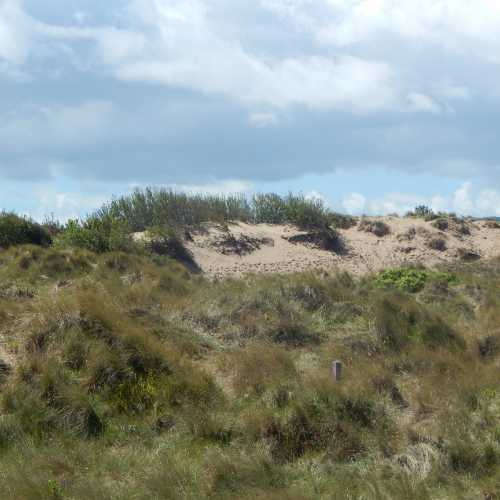 Coastal sites, sand dunes - perfect for the silvery leafcutter bee
Coastal sites, sand dunes - perfect for the silvery leafcutter beeThe coastal SSSI where I was able to take this photograph, is ideal for the silvery leafcutter bee.
Nesting takes place in sandy ground, and in aggregations, which can be quite large. They prefer sandy ground with non-compacted sand and fine plant roots.
Leafcutter bees cut segments of leaf with which they build their nest cells.
This
species uses leaves and also sometimes petals of the bird’s foot trefoil plant
in the construction of its nest. The nest and cells are constructed by the females.
Foraging
This
site offers wonderful foraging opportunities for Megachile leachella: large swathes of bird’s foot trefoil and
clover are present.
 Stretches of bird's foot trefoil and clover are perfect foraging plants for silvery leafcutter bees. Bird's foot trefoil petals may be used in the construction of nests.
Stretches of bird's foot trefoil and clover are perfect foraging plants for silvery leafcutter bees. Bird's foot trefoil petals may be used in the construction of nests.They will also enjoy foraging on the beautiful restharrow which can be found creeping among the grasses (also a favourite with bumble bees).
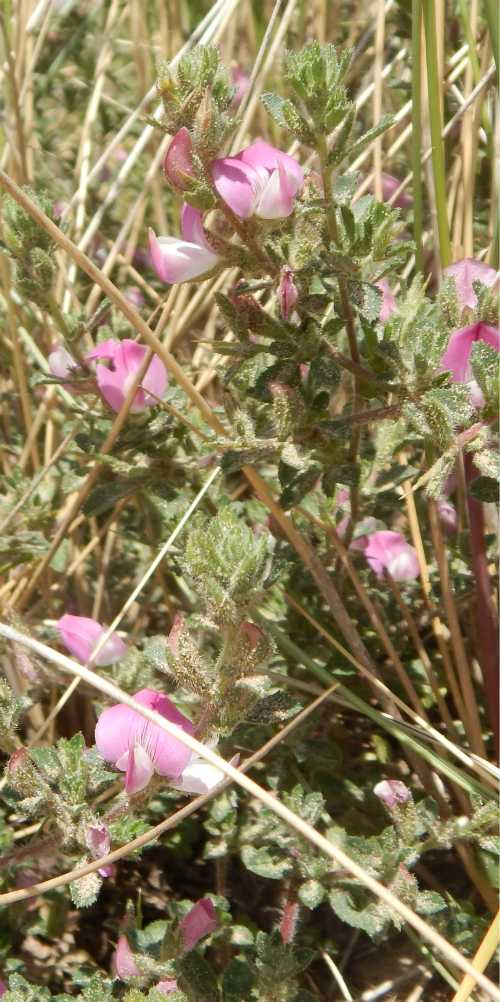
There is also an abundance of ragworts and brambles.
